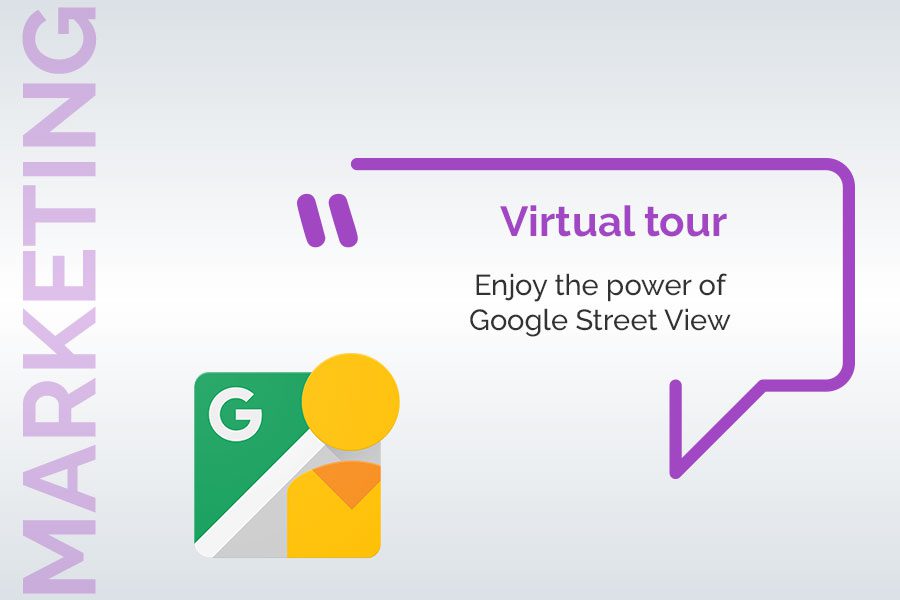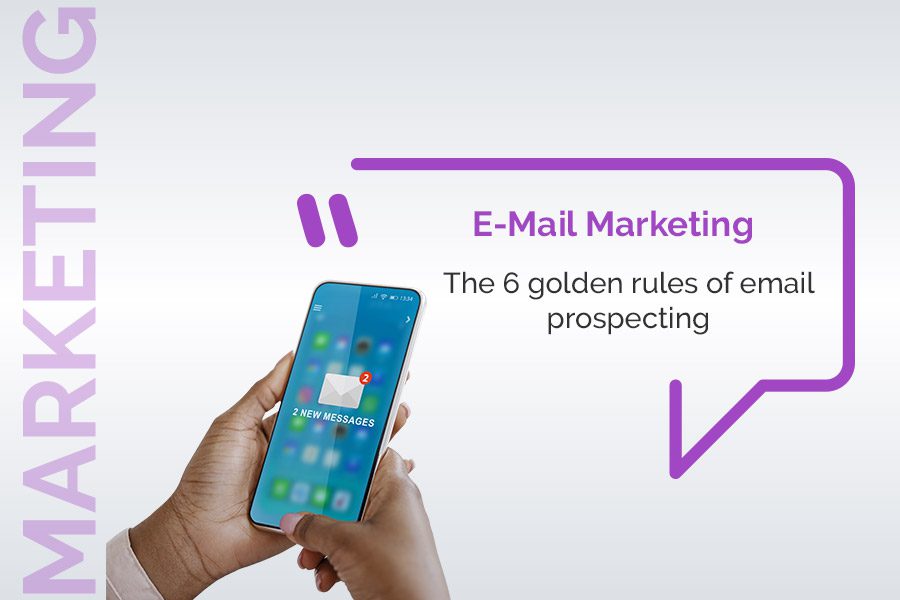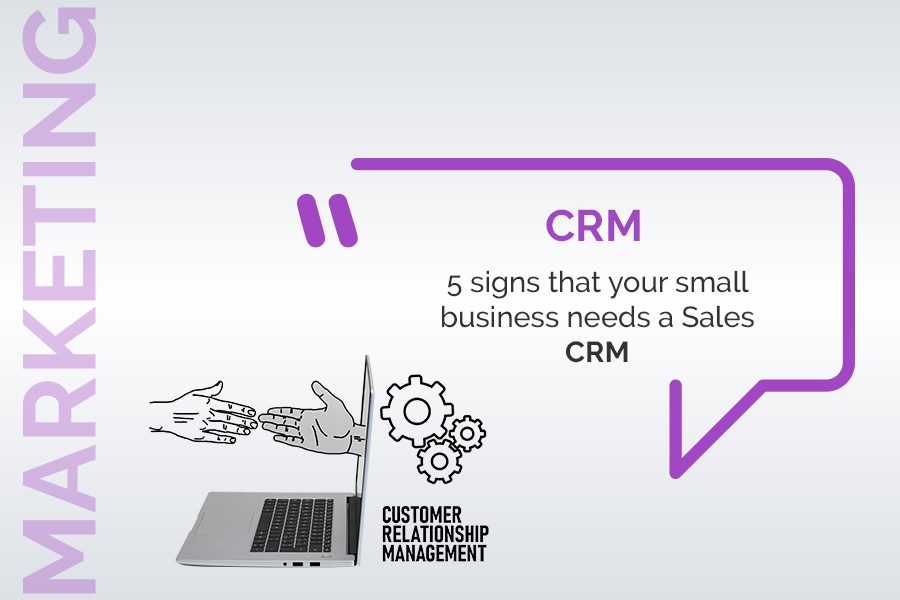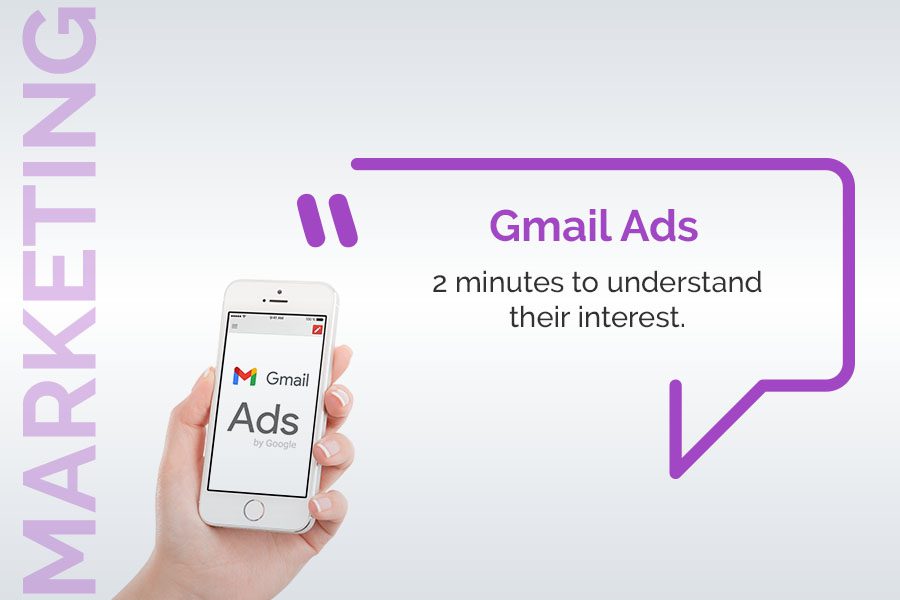
Virtual tour: Enjoy the power of Google Street View.
July 9, 2020
Google ads / Facebook ads: Which one to choose? Why choose?
July 22, 2021

Contrary to cold calls which are losing ground because they are often perceived as intrusive spam, e-Mail prospecting is still, if certain rules are well applied, a good way to develop your B2B activity.
In addition, unlike telephone prospecting, which requires the mobilization of personnel and the expenditure of time, eMail marketing allows you to reach numerous targets almost instantaneously at low cost.
If there is no magic formula that would work every time and that would allow you to prospect massively by simply copying and pasting, there are rules that cannot be ignored in order to be successful and to avoid disappointment.
Here are the 6 rules that we apply in our agency.

Identify your target.
Who do you want to reach?

Identify your target.
Who do you want to reach?
Study your contact list.
The first step in your action plan is to create e-mail lists that group the people who make them up into coherent groups with similar professional concerns: same job, same function, same company size, same sector of activity. This will allow the message you are trying to get across to be more adapted to the realities of each of these categories.
Create sub-categories.
You can create sub-categories, for example: if you are targeting cleaning companies, distinguish between small companies for which you will try to speak directly to the manager, and large companies for which you will have to identify the right person in the right department.
When sifting through your database, remember to put aside the contacts that do not seem to be the best suited to the proposal contained in your e-mail, and reserve these contacts for another campaign.


What is the purpose of your mail?
What action do you want your recipient to take?

What is the purpose of your mail?
What action do you want your recipient to take?
Be realistic.
The goal should not be that your recipient, captivated by your prose and your proposal, will hurriedly pick up the phone and ask to meet you within the hour.
Introduce a Call to Action.
In order to manage your e-mailing campaigns and to measure their profitability, you must set a minimum transformation rate.
To achieve this, you need to include a Call to Action in your mail that is not binding and that does not give the impression of forcing the hand. For example: “I want to be called back”, “I want to make an appointment”, “I want to subscribe to the newsletter” are recommended if you want to generate leads.
The objective of your campaign must be unique.
This means:
- That between introducing a new product, building loyalty with your current customers, generating new contacts… you should choose only one objective. If you want to generate new contacts first, then sell, you will have to set up two separate campaigns.
- Your emails should contain only one Call to Action.

Personalize your email.
Be interesting before you show interest.

Personalize your email.
Be interesting before you show interest.
If you have respected point 1 of this article, you have segmented your mailing lists. Let’s go back to our example of cleaning companies.
- For small companies, no problem, the boss is logically a conductor who manages his activity himself or who has a global vision on the different problems of his business.
- For large companies, you will not have the same discourse if you are trying to sensitize the purchasing manager to propose your products or the administrative manager in order to present your professional offers.
In both cases, you must know the problems they are facing and show them that because you know what these problems are, your solutions will help them move forward.
Don’t hesitate to use concrete examples and figures to be more effective in your demonstration. In short, if you want to get your interlocutor’s attention? Tell them about yourself.
Then formulate your call to action, which will be an invitation to solve these problems.
As for the form (we’ll talk about this a little further down), be short and factual, and, once again, include only one call to action.

Be creative
Use a natural tone and show that your e-mail was written spontaneously.

Be creative
Use a natural tone and show that your e-mail was written spontaneously.
E-mails that look like copy and paste sent en masse are noticeable at first glance, they are a useless waste of time for you and your interlocutor.
Your mail must stand out from the others and bring a concrete information or service to your recipient, you must show him that you are a qualified interlocutor.
Never forget to add a personal touch and always name your contact person when possible.
Do e-mail marketing outside your campaigns.
You can also make prospecting e-mails outside your campaigns. For example, if the local press is talking about one of your prospects, if you have learned that another one has moved or that one of your Linkedin contacts has been appointed to a new position, this is an opportunity to write a paragraph or two and send it to them as quickly as possible.
Give the impression that your email was written in a hurry (but not in a panic) and it will look more natural and personal.


Take care in writing the email.
We have just seen a few rules that will help you stand out in terms of content, now let’s see what you need to respect in terms of form.

Take care in writing the email.
We have just seen a few rules that will help you stand out in terms of content, now let’s see what you need to respect in terms of form.
The subject line
As you can probably see every day, there are several kinds of tactics to encourage you to open an e-mail: announcement of a discount, use of questioning, indication of a certain urgency…. we advise you against these methods.
You need to write something that is personal and implies that the message comes from a human being.
Do not write the subject in capital letters, do not use exclamation marks, and avoid words that could automatically place your message in the trash: free, exceptional, and action verbs (take advantage, win…) that are too spammy.
Greet your interlocutor by name.
Banish the simple “Hello” at the beginning of your email.
Never start with a question.
Starting with a question will instantly give the impression to a trained eye that you are dealing with a mass e-mail.

Structure your text
1. Greeting
- Use first name + last name
2. Connecting sentence.
- “I am taking the liberty of contacting you on behalf of Mr. XXX”
- “A very good article that appeared this week on your company’s blog made me react and I wanted to express my interest in your innovative approach”
- Avoid addressing mundane topics like the weather.
3. Introduction and rationale for cold contact.
- “I’m in charge of the xxxx program at YYY, I would be very interested in presenting you this innovative solution that I think could answer the problem you address in your blog. “
4. Statement of the purpose of the email (in this case to obtain an appointment).
- “We could help your company to develop these new markets you are talking about. I would be happy to talk with you about this in a few minutes interview. “
5. Call to action
- Call to action with a link to your agenda, for example.
6. E-mail signature
- If this is the case, don’t overemphasize your “sales” function, phrase it more with terms showing your expertise.
Bonus.
Don’t forget to air out your text in short paragraphs, be sparing with the use of bold or colors and also think about testing the layout of your email on mobile.

Create an attractive landing page.
Getting people to click on the Call to Action is good, but converting is even better.

Create an attractive landing page.
Getting people to click on the Call to Action is good, but converting is even better.
Your message invites to discover your new services? It aims to make your contact aware of the need to meet you? Bingo, he accepts your request, he clicks.
Very well, but have you prepared the next step, what will happen once they are on your website? If you only lead them to your home page, they may not perceive the continuity between your email and the action that follows.
The landing page is there to remedy this. It must summarize and amplify the proposal you make in your mail and make them want to activate another call to action: subscribe to the newsletter, contact, buy…
Conclusion.
A quick reminder before you embark on the exercise of e-mail marketing: the rules of the GDPR mean that B2B e-Mail prospecting is subject to strict rules, in particular that:
- The recipients of your e-mails must have consented to being included in your mailing list.
- The people who receive your e-mail can unsubscribe directly in the e-mail.
As digital marketing professionals we can assist you from A to Z in all your e-mail marketing and social media management campaigns. Don’t hesitate to contact us for a free initial analysis of your needs.



